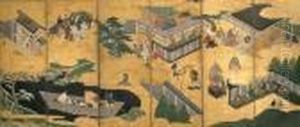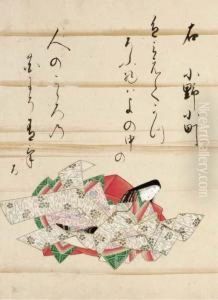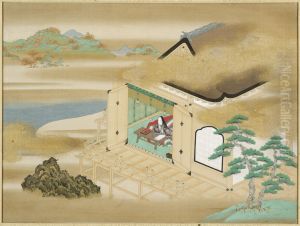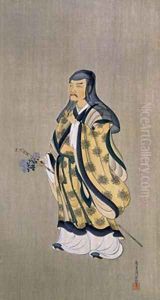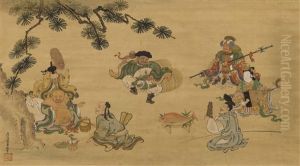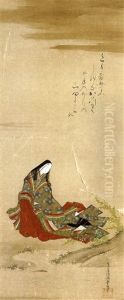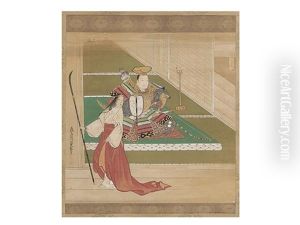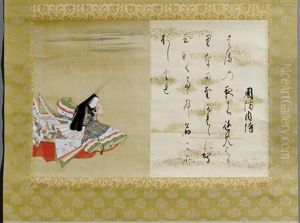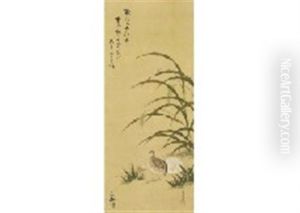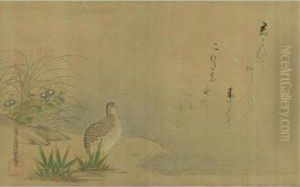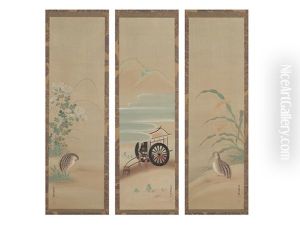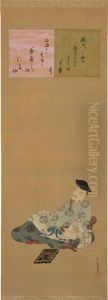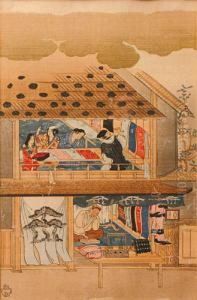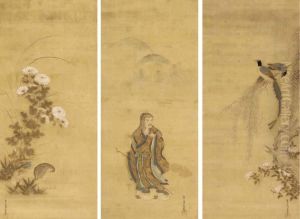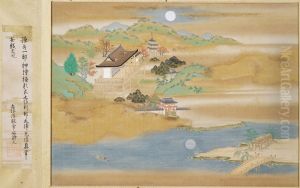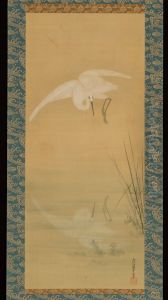Mitsuoki, Tosa Paintings
Tosa Mitsuoki was a prominent Japanese painter of the Tosa school of Japanese painting. Born in Sakai, a city in the Osaka Prefecture, in 1617, he was the son of Tosa Mitsunori, who was also a painter. The Tosa school, which Mitsuoki would eventually lead, was known for its conservative style that favored classical Yamato-e painting, a style that emphasized traditional Japanese subjects, themes, and techniques.
Mitsuoki's work was instrumental in reviving the fortunes of the Tosa school, which had fallen out of favor compared to the more dominant Kanō school, which was known for its Chinese-influenced ink paintings. He did this by refining the Yamato-e style and adapting it to the aesthetic preferences of the time, which included a move towards more decorative and detailed representations.
Mitsuoki is best known for his delicate paintings of flowers and birds, which are often highlighted by their serene and poetic atmosphere. His most famous works include 'Tale of Genji' screens, which depict scenes from the classic Japanese novel of the same name. These screens showcase his meticulous attention to detail and his ability to convey narrative and emotion in his depictions.
Mitsuoki also contributed to the Tosa school by developing a new style that combined the traditional Japanese Yamato-e techniques with the realism and perspective associated with Western art. This synthesis contributed to the unique development of Edo-period painting.
In addition to his work as a painter, Mitsuoki also served as an official court painter, which was a significant achievement considering that the Tosa school had been displaced by the Kanō school in this role for many years. His success in reclaiming this position for the Tosa school was a testament to his skill and the respect he garnered.
Mitsuoki's influence extended beyond his lifetime, as he trained numerous disciples and his style continued to be a significant force in the world of Japanese art. He died in 1691, leaving behind a legacy as a master painter who not only brought back the elegance and sophistication of classical Japanese painting but also innovated within the tradition, setting the stage for future generations of artists within the Tosa school.
